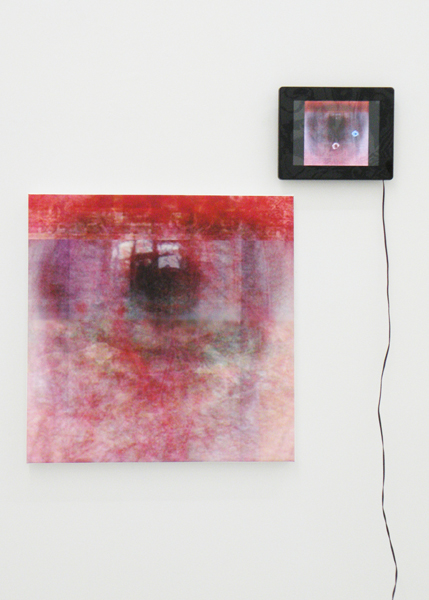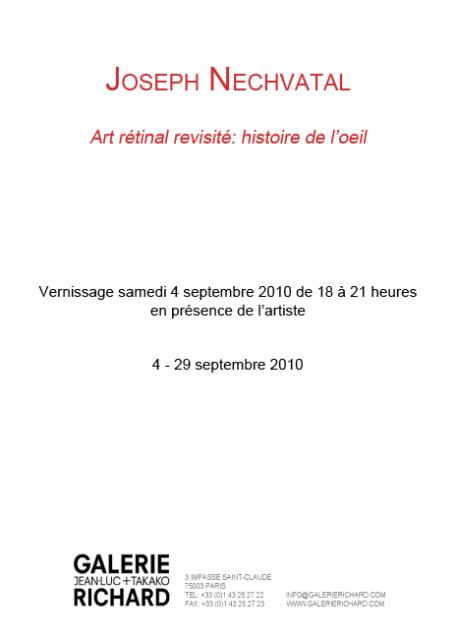 Retinal Art Revisited: Story of the Eye - September 4th – 29th
Retinal Art Revisited: Story of the Eye - September 4th – 29th
A pioneer in the development in digital art, Joseph Nechvatal will present, in a second solo show in the gallery, a series of new paintings, most of which are accompanied by a digital animation.
Art Rétinal Revisité: Histoire de l’Oeil will take place from September 4th through September 29th, 2010 and will invite the spectator to reflect on the importance of visual noise in the process of creation.
The Retinal Art Revisited series consists of 15 digitally assisted paintings (10 of which have accompanying animations). The animations that are joined with paintings show a computer virus eating the same image as that which is on the painting. This approach began with work in the 2004 Digital Sublime show at MOCA in Taipei.
In a group of painting-animations portray the retina of the human eye, combined with painting-animations of the human rectum. Another group of paintings address the peculiar phenomenon of shadows.
With the title of the exhibition, Joseph Nechvatal differs with Marcel Duchamp’s preconception that intelligent art cannot also be beautiful to the eye.
Joseph Nechvatal has worked with electronic images and information technology since 1986. His computer-assisted paintings turn images of the human body into pictorial units that are then transformed by computer virus-like software. This activity represents the contamination of the tradition of painting on canvas by new digital technology, subsequently creating an interface between the virtual and the real that Nechvatal calls the viractual.
It was in 1991, while working at the Louis Pasteur Atelier in Arbois and at the Royal Saltworks of Arc et Senans that Nechvatal and Jean-Philippe Massonie developed a program of information technology viruses. In 2001 Nechvatal and Stéphane Sikora combined the initial virus project with the principles of artificial life, creating systems of synthesis that reproduce the behavioural characteristics of living systems. In his previous digital paintings, an artificial life virus was introduced into an image. This population of active viruses then grew, reproduced and propagated within the space of the picture. The artist then froze a moment that he later created as a painting. Were the artist not to interfere, the process of propagation would continue until the original picture would be completely destroyed.
The notion of visual noise that not only strengthens unique personal powers of imagination and critical thinking, but also is a source of creation in itself, is a key element in the understanding of the new series of works exhibited at Galerie Jean-Luc & Takako Richard.
Joseph Nechvatal’s work is in many major private and institutional collections around the world. An interview of the artist will accompany the exhibition.
http://www.galerierichard.com/
Galerie Jean-Luc & Takako Richard
3, impasse Saint-Claude / 74, rue de Turenne
75003 Paris - France
Opening hours
Tuesday-Saturday 11 am to 7 pm
Nearest subway stations
Saint-Sébastien Froissard (line 8)
Saint-Paul (line 1)
Nearest buses
20, 29, 56, 65, 69, 76, 96
Contact information
Jean-Luc Richard: President
Takako Richard: Vice-President
e-mail: info@galerierichard.com
tel: 33 (0)1 43 25 27 22
fax: 33 (0)1 43 25 27 23
http://www.galerierichard.com
 Retinal Art Revisited 2
Retinal Art Revisited 2
Installation shots
Installation shots of Art rétinal revisité: histoire de l'oeil http://www.galerierichard.com/en_exhibitions_grande.php?id=181&numero=1